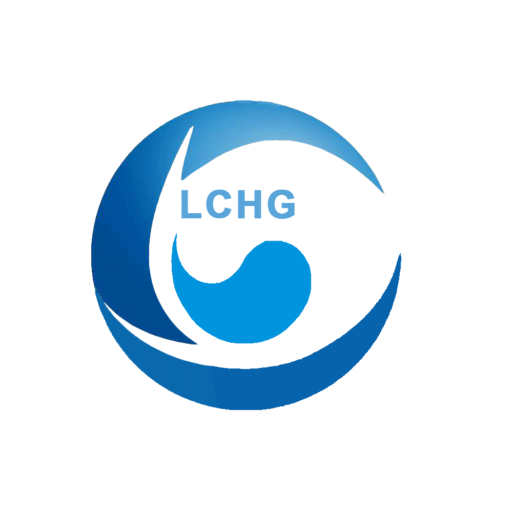紫外线和 LED 美甲灯:谁才是凝胶亮油固化之王?
在令人眼花缭乱的美甲世界里,UV 和 LED 美甲灯是固化凝胶甲油的两大明星。这两种美甲灯的主要区别在于内部灯泡的类型和发出光线的特性。
从科学原理上讲,啫喱水的关键化学成分是光引发剂。它就像一把等待开启的锁,只有在特定波长的紫外线照射下,才能触发神奇的硬化或 "固化 "过程,即所谓的 "光反应"。虽然紫外线灯和 LED 灯都在紫外线波长范围内工作,两者也很相似,但它们发出的波长范围却截然不同。紫外线灯就像慷慨的施舍者,发出的波长范围很广;而 LED 灯就像精确的弓箭手,发出的波长范围较窄,更有针对性。
回顾美甲行业的发展,紫外线美甲灯曾一度成为主流选择。例如,上世纪 90 年代,美甲技术开始流行,紫外线灯因为可以固化凝胶甲油而迅速在美甲沙龙中流行起来。不过,随着科技的不断进步,LED 美甲灯逐渐脱颖而出。
在实际应用中,两者有一些关键的区别,这对美甲师来说非常重要。首先,就成本而言,LED 灯通常更为昂贵。与高端电子产品一样,先进的技术和工艺意味着初始投资较高。但从长远来看,其优势明显。紫外线灯的寿命通常只有 1000 小时,就像匆匆过客。即使按照行业惯例每半年更换一次,频繁的更换也会带来额外的成本和麻烦。而 LED 灯就像一个长寿的伙伴,寿命长达 50,000 小时,这意味着一旦有了 LED 灯,就几乎可以不用更换灯管了。
说到固化速度,LED 灯是无可争议的冠军。通常情况下,只需 30 秒就能完美固化凝胶甲,这与 36 瓦紫外线灯长达两分钟的固化时间相比,简直是天壤之别。不过,也有一个问题:如果美甲技师在一只手放在灯管里固化第一种颜色时,下一种颜色的涂抹速度太慢,那么 LED 灯在固化时间上的优势可能就无法完全体现出来。
就兼容性而言,并非所有凝胶指甲油都能与 LED 灯配合使用。有些凝胶甲油是专门为紫外线美甲灯配制的,在这种情况下,LED 灯就不适用了。而紫外线灯的波长范围很广,可以与所有类型的凝胶甲油兼容,就像各行各业的大师一样。市场上还出现了 UV/LED 美甲灯这种聪明的解决方案,它就像一个万能工具箱,将 LED 灯泡和 UV 灯泡结合在一起,让美甲师可以在不同类型的凝胶甲油之间进行切换。
说到安全问题,紫外线照射仍然会带来一些潜在风险,尽管大量的研究和实践证明,紫外线照射对顾客皮肤的伤害微乎其微。而 LED 灯则是一个安全的避风港,因为它不使用紫外线,自然也不会带来任何相关风险。
就功率而言,大多数专业 LED 和 UV 胶灯的最低功率为 36 瓦。这是因为高功率就像一把强有力的钥匙,可以更快地打开凝胶抛光剂固化的大门,这在繁忙的沙龙环境中尤为重要。对于 LED 胶油来说,高瓦数的 LED 灯可以在瞬间完成固化,而 UV 灯则相对较慢。
还有一个常见的误解需要澄清。无论是 LED 灯还是紫外线灯,对普通指甲油都没有任何作用。普通指甲油的配方与凝胶指甲油完全不同,只需要一个简单的 "风干 "过程,就像花朵在微风中自然风干花瓣上的露水一样。
如果美甲师要开一家新的美甲店,在选择美甲灯时要考虑很多因素。如果预算有限,初期客流量不大,紫外线灯可能是更经济实惠的选择,但从长远来看,需要考虑更换灯泡的成本。然而,如果你追求高效率、长期运行和更高的客户满意度,LED 灯无疑是更好的选择,尽管初期投资较高。此外,随着人们环保意识的增强,如果美甲店注重绿色安全的美甲服务,LED 灯是最好的选择,因为它不涉及紫外线辐射,更符合现代消费者对健康安全的追求。
立即联系我们!
我们发现了一种品牌的 不含 HEMA 和 TPO 的凝胶抛光剂: 克拉克莱尔
如果您需要 UV 单体价格,请在下表中填写您的联系信息,我们通常会在 24 小时内与您联系。您也可以给我发电子邮件 info@longchangchemical.com 请在工作时间(UTC+8 周一至周六,上午 8:30 至下午 6:00)或使用网站即时聊天工具获得及时回复。
| 聚硫醇/聚硫醇 | ||
| DMES 单体 | 双(2-巯基乙基)硫醚 | 3570-55-6 |
| DMPT 单体 | THIOCURE DMPT | 131538-00-6 |
| PETMP 单体 | 季戊四醇四(3-巯基丙酸酯) | 7575-23-7 |
| PM839 单体 | 聚氧(甲基-1,2-乙二基) | 72244-98-5 |
| 单官能团单体 | ||
| HEMA 单体 | 甲基丙烯酸 2-羟乙基酯 | 868-77-9 |
| HPMA 单体 | 甲基丙烯酸羟丙酯 | 27813-02-1 |
| THFA 单体 | 丙烯酸四氢糠酯 | 2399-48-6 |
| HDCPA 单体 | 氢化双环戊烯丙烯酸酯 | 79637-74-4 |
| DCPMA 单体 | 甲基丙烯酸二氢双环戊二烯酯 | 30798-39-1 |
| DCPA 单体 | 丙烯酸二氢双环戊二烯酯 | 12542-30-2 |
| 二氯丙烯酰亚胺单体 | 甲基丙烯酸二环戊氧基乙酯 | 68586-19-6 |
| DCPEOA 单体 | 丙烯酸二环戊烯基氧基乙基酯 | 65983-31-5 |
| NP-4EA 单体 | (4) 乙氧基化壬基酚 | 50974-47-5 |
| LA 单体 | 丙烯酸十二烷基酯/丙烯酸十二烷基酯 | 2156-97-0 |
| THFMA 单体 | 甲基丙烯酸四氢糠酯 | 2455-24-5 |
| PHEA 单体 | 2-苯氧基乙基丙烯酸酯 | 48145-04-6 |
| LMA 单体 | 甲基丙烯酸月桂酯 | 142-90-5 |
| IDA 单体 | 丙烯酸异癸酯 | 1330-61-6 |
| IBOMA 单体 | 甲基丙烯酸异冰片酯 | 7534-94-3 |
| IBOA 单体 | 丙烯酸异冰片酯 | 5888-33-5 |
| EOEOEA 单体 | 2-(2-乙氧基乙氧基)丙烯酸乙酯 | 7328-17-8 |
| 多功能单体 | ||
| DPHA 单体 | 双季戊四醇六丙烯酸酯 | 29570-58-9 |
| DI-TMPTA 单体 | 二(三羟甲基丙烷)四丙烯酸酯 | 94108-97-1 |
| 丙烯酰胺单体 | ||
| ACMO 单体 | 4-丙烯酰基吗啉 | 5117-12-4 |
| 双功能单体 | ||
| PEGDMA 单体 | 聚乙二醇二甲基丙烯酸酯 | 25852-47-5 |
| TPGDA 单体 | 三丙二醇二丙烯酸酯 | 42978-66-5 |
| TEGDMA 单体 | 三乙二醇二甲基丙烯酸酯 | 109-16-0 |
| PO2-NPGDA 单体 | 丙氧基新戊二醇二丙烯酸酯 | 84170-74-1 |
| PEGDA 单体 | 聚乙二醇二丙烯酸酯 | 26570-48-9 |
| PDDA 单体 | 邻苯二甲酸二乙二醇二丙烯酸酯 | |
| NPGDA 单体 | 新戊二醇二丙烯酸酯 | 2223-82-7 |
| HDDA 单体 | 二丙烯酸六亚甲基酯 | 13048-33-4 |
| EO4-BPADA 单体 | 乙氧基化 (4) 双酚 A 二丙烯酸酯 | 64401-02-1 |
| EO10-BPADA 单体 | 乙氧基化 (10) 双酚 A 二丙烯酸酯 | 64401-02-1 |
| EGDMA 单体 | 乙二醇二甲基丙烯酸酯 | 97-90-5 |
| DPGDA 单体 | 二丙二醇二烯酸酯 | 57472-68-1 |
| 双-GMA 单体 | 双酚 A 甲基丙烯酸缩水甘油酯 | 1565-94-2 |
| 三官能单体 | ||
| TMPTMA 单体 | 三羟甲基丙烷三甲基丙烯酸酯 | 3290-92-4 |
| TMPTA 单体 | 三羟甲基丙烷三丙烯酸酯 | 15625-89-5 |
| PETA 单体 | 季戊四醇三丙烯酸酯 | 3524-68-3 |
| GPTA ( G3POTA ) 单体 | 丙氧基三丙烯酸甘油酯 | 52408-84-1 |
| EO3-TMPTA 单体 | 三羟甲基丙烷三丙烯酸乙氧基化物 | 28961-43-5 |
| 光阻单体 | ||
| IPAMA 单体 | 2-异丙基-2-金刚烷基甲基丙烯酸酯 | 297156-50-4 |
| ECPMA 单体 | 1-乙基环戊基甲基丙烯酸酯 | 266308-58-1 |
| ADAMA 单体 | 1-金刚烷基甲基丙烯酸酯 | 16887-36-8 |
| 甲基丙烯酸酯单体 | ||
| TBAEMA 单体 | 2-(叔丁基氨基)乙基甲基丙烯酸酯 | 3775-90-4 |
| NBMA 单体 | 甲基丙烯酸正丁酯 | 97-88-1 |
| MEMA 单体 | 甲基丙烯酸 2-甲氧基乙酯 | 6976-93-8 |
| i-BMA 单体 | 甲基丙烯酸异丁酯 | 97-86-9 |
| EHMA 单体 | 甲基丙烯酸 2-乙基己酯 | 688-84-6 |
| EGDMP 单体 | 乙二醇双(3-巯基丙酸酯) | 22504-50-3 |
| EEMA 单体 | 2-甲基丙-2-烯酸 2-乙氧基乙酯 | 2370-63-0 |
| DMAEMA 单体 | 甲基丙烯酸 N,M-二甲基氨基乙酯 | 2867-47-2 |
| DEAM 单体 | 甲基丙烯酸二乙氨基乙酯 | 105-16-8 |
| CHMA 单体 | 甲基丙烯酸环己基酯 | 101-43-9 |
| BZMA 单体 | 甲基丙烯酸苄酯 | 2495-37-6 |
| BDDMP 单体 | 1,4-丁二醇二(3-巯基丙酸酯) | 92140-97-1 |
| BDDMA 单体 | 1,4-丁二醇二甲基丙烯酸酯 | 2082-81-7 |
| AMA 单体 | 甲基丙烯酸烯丙酯 | 96-05-9 |
| AAEM 单体 | 甲基丙烯酸乙酰乙酰氧基乙基酯 | 21282-97-3 |
| 丙烯酸酯单体 | ||
| IBA 单体 | 丙烯酸异丁酯 | 106-63-8 |
| EMA 单体 | 甲基丙烯酸乙酯 | 97-63-2 |
| DMAEA 单体 | 丙烯酸二甲胺基乙酯 | 2439-35-2 |
| DEAEA 单体 | 2-(二乙基氨基)乙基丙-2-烯酸酯 | 2426-54-2 |
| CHA 单体 | 丙-2-烯酸环己基酯 | 3066-71-5 |
| BZA 单体 | 丙-2-烯酸苄酯 | 2495-35-4 |
